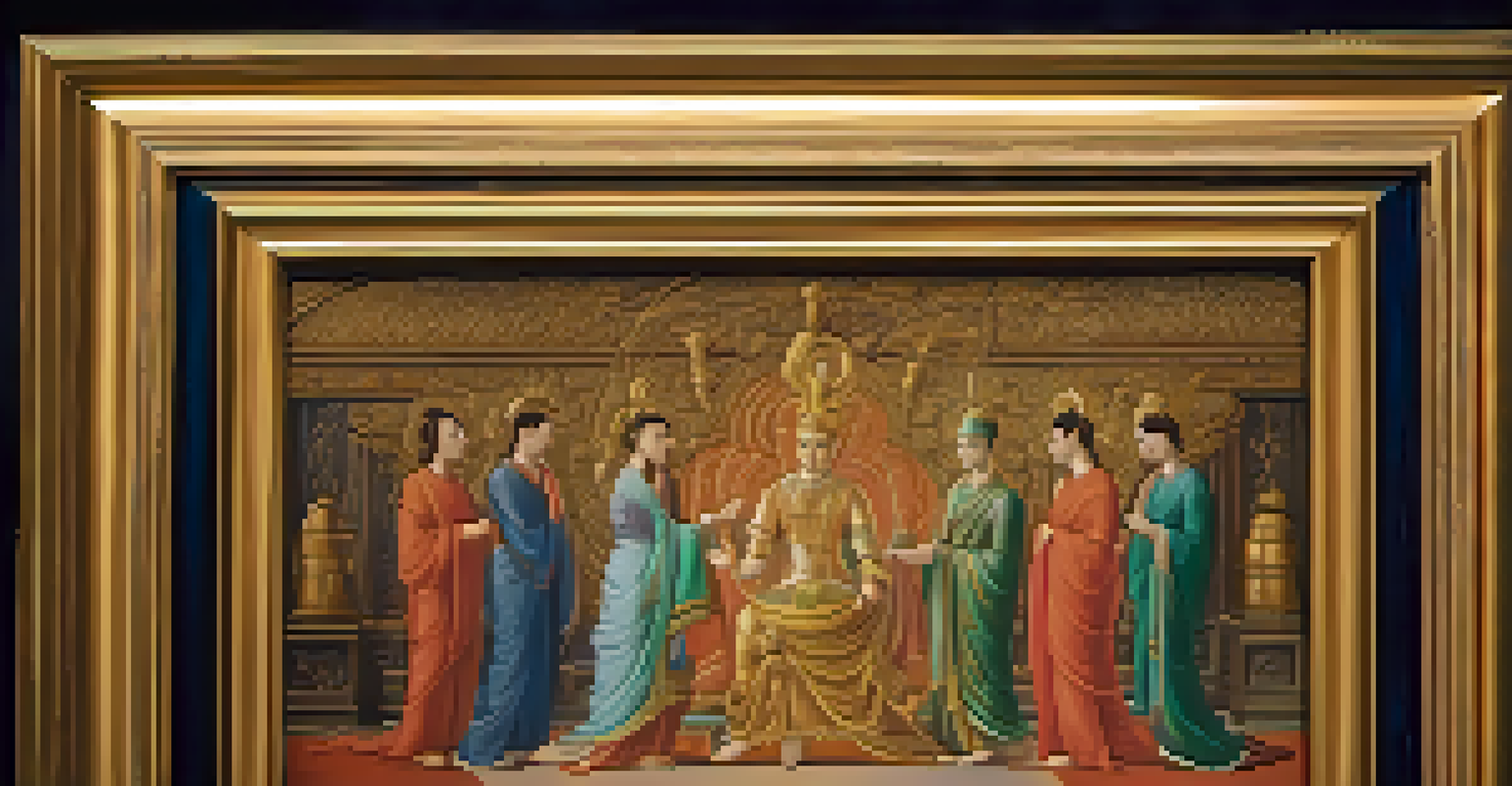The Impact of Provenance on Art Value and Collectibility

Understanding Provenance in the Art World
Provenance refers to the history of ownership of a piece of art, tracing its journey from creator to current owner. It's like a biography for a painting or sculpture, detailing where it has been and who has held it. This history can significantly affect the artwork's value, as collectors often seek pieces with a rich and documented past.
Provenance is the key to understanding the value of art—not just in terms of dollars and cents, but in terms of its history and significance.
For example, an artwork once owned by a famous collector or displayed in a prestigious gallery automatically gains a layer of prestige. This connection not only adds to its story but also its marketability. Collectors appreciate the narrative behind the art, enhancing its allure and desirability.
In essence, provenance serves as a narrative thread that connects the artwork to its historical and cultural context. The more compelling the story, the more likely it is to attract buyers, as they see not just a piece of art, but a part of history.
The Role of Provenance in Valuation
Art valuation is an intricate process that takes various factors into account, and provenance is a key player. When appraisers evaluate a piece, they meticulously research its ownership history, as any significant past can dramatically increase its worth. A painting that was once part of a royal collection, for example, could fetch millions more than a similar piece without such a history.

Moreover, the verification of provenance helps to combat forgery and deception in the art market. A well-documented provenance acts as a safeguard against fraud, assuring buyers that they are investing in an authentic piece. This level of assurance can be crucial in high-stakes transactions.
Provenance Boosts Art Value
The documented history of ownership significantly enhances an artwork's market value and desirability.
Ultimately, provenance not only affects the perceived value of an artwork but also its market stability. Buyers are more willing to invest in an art piece with a clear and reputable provenance, knowing they are making a sound investment.
How Provenance Affects Collectibility
Collectibility is influenced by various factors, including rarity, condition, and, importantly, provenance. Art collectors often gravitate toward pieces with a well-documented history, as these works promise a connection to the past and a sense of prestige. This desire can lead to higher demand and, consequently, increased prices.
In the world of art, authenticity is everything. Provenance is the story that validates the authenticity of a piece.
For instance, contemporary artists who have exhibited in notable galleries or received prestigious awards tend to have their works collected more avidly. Collectors want to own a piece that reflects a certain status, and the artist's provenance plays a significant role in that perception. The same applies to historical pieces, where a compelling ownership story can elevate its desirability.
In this way, provenance acts as a magnet for collectors, drawing them to artworks that resonate with their personal tastes and investment strategies. The more intriguing the provenance, the more likely it is that collectors will pursue the piece with fervor.
The Impact of Provenance on Market Trends
Market trends in the art world can be significantly influenced by provenance, as collectors often seek works that tell a story. When a piece with a notable provenance comes to market, it can spark a surge of interest, driving prices up and creating a ripple effect across similar works. This phenomenon illustrates how a single documented history can impact the entire market.
For instance, the sale of a painting with a fascinating backstory can ignite a renewed interest in the artist’s other works, prompting collectors to hunt down pieces that may not have received as much attention. This can lead to an increase in value for various pieces by the same artist, demonstrating how provenance can shape broader market dynamics.
Provenance Shapes Collectibility
Art collectors are more inclined to invest in pieces with a well-documented provenance, as it connects them to a rich narrative.
Thus, the connection between provenance and market trends showcases the power of storytelling in the art world. A compelling narrative can provide momentum, influencing not just individual transactions, but the overall demand for certain styles or periods of art.
Case Studies: Provenance in Action
Examining specific case studies can provide insight into the tangible effects of provenance on art value. A well-known example is the sale of a Modigliani painting that fetched over $70 million at auction, largely due to its illustrious history of ownership. The painting had passed through several notable collections, each adding to its narrative and market value.
Another instance is the impact of provenance on the art market during times of crisis, such as World War II. Many artworks were stolen or lost, and their subsequent recovery often involves a detailed examination of provenance. This not only helps reunite artworks with their rightful owners but also increases their value as they gain a story of survival and restoration.
These case studies illustrate how provenance can shape the trajectory of an artwork's value, cementing its place in art history and the market. They serve as reminders of the profound impact that a well-documented history can have on perception and desirability.
Challenges in Establishing Provenance
While provenance is crucial, establishing it can be fraught with challenges. Artworks that have changed hands multiple times or have been lost to history may lack clear documentation, making it difficult to trace their origins. This uncertainty can diminish their value and attract skepticism from potential buyers.
Additionally, issues such as forgery and disputes over ownership can complicate the provenance narrative. In recent years, there have been several high-profile cases where the authenticity of artworks was questioned due to unclear provenance. These situations underscore the importance of thorough research and documentation.
Technology's Role in Provenance
Advancements like blockchain are set to revolutionize how provenance is established and verified in the art market.
Despite these challenges, the art community continues to strive for transparency and integrity in provenance documentation. Initiatives are being developed to create more comprehensive databases and resources to aid in the verification process, ultimately benefiting both collectors and artists.
The Future of Provenance in the Art Market
As technology evolves, so does the approach to provenance in the art market. Digital tools and blockchain technology are being explored to create immutable records of ownership, making it easier to verify provenance and combat forgery. This could revolutionize the way art ownership is tracked and authenticated.
Moreover, the rise of online art sales platforms is changing how provenance is viewed, as buyers can now access a broader range of artworks and their histories from the comfort of their homes. This accessibility can democratize the art market, allowing more collectors to engage with provenance in a meaningful way.

In conclusion, the future of provenance in the art market looks promising, with innovations poised to enhance transparency and trust. As collectors become more educated about the importance of provenance, its role in shaping art value and collectibility will only continue to grow.